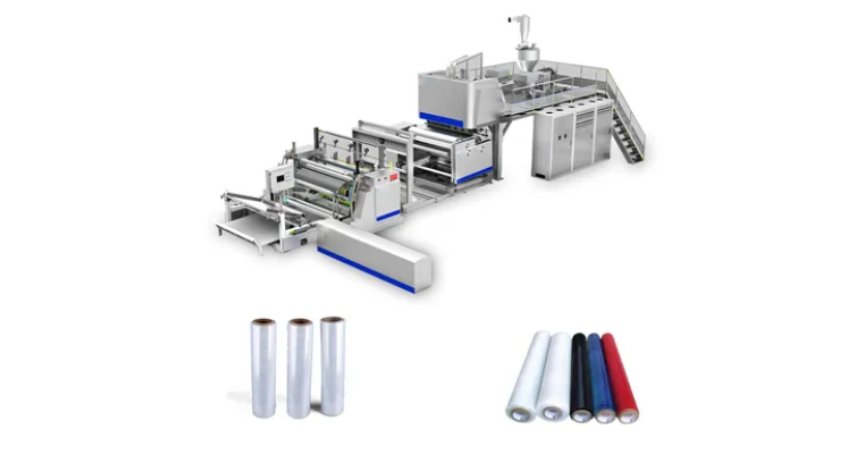Introduction
In today’s packaging industry, stretch film and cling film play a crucial role in wrapping, protecting, and preserving products. Whether it’s pallet wrapping for logistics or food-grade cling film for household and industrial use, the demand for these films continues to rise globally. The Cast (Stretch/Cling) Film Plant is the advanced machinery designed to produce these highly elastic, durable, and transparent films using the cast extrusion process. This blog explains what the plant is, how it works, its applications, benefits, and why investing in this plant is a profitable business opportunity.
What is a Cast (Stretch/Cling) Film Plant?
A Cast Film Plant is a plastic extrusion line that manufactures thin plastic films—mainly stretch wrap films and cling films—using cast extrusion technology. These films are made from polyethylene resins (primarily LLDPE, LDPE, and metallocene blends) and are known for:
High stretchability (up to 300% elongation)
Excellent cling properties (sticks to surfaces without adhesives)
Transparency and gloss
Tear and puncture resistance
The plant can produce films in different thicknesses, widths, and stretch levels depending on the requirement.
Working Process of Cast Film Plant
Raw Material Feeding – LLDPE, LDPE, and specialty additives are fed into the extruder.
Extrusion – The polymer melt is forced through a flat die to form a thin molten sheet.
Quenching on Chill Roll – The hot sheet is immediately cooled and solidified on a chill roll for excellent clarity and smoothness.
Stretching & Orientation – The sheet is stretched to improve mechanical strength and elasticity.
Winding – The finished film is rolled onto jumbo rolls or slit into smaller rolls.
Types of Films Produced
- Stretch Film
Used in industrial packaging and logistics.
Provides high stretch and load stability.
Available in hand rolls and machine rolls. -
Cling Film
Food-grade film used in households, supermarkets, and food packaging.
Keeps food fresh by sealing and preventing contamination. - Specialty Films
UV-protected stretch films for outdoor storage.
Colored or printed stretch films for branding and security.
Anti-static stretch films for electronic goods.
Applications of Cast Stretch/Cling Films
Logistics & Warehousing – Pallet wrapping for secure transport.
Food Industry – Packaging fruits, vegetables, dairy, and ready-to-eat meals.
Retail & Household – Cling films for kitchen and supermarket use.
Electronics – Static-free packaging for sensitive components.
Agriculture – Silage wrap and crop protection.
Advantages of Cast Film Plant
High Demand Products – Stretch and cling films are indispensable for packaging.
Superior Clarity – Cast extrusion offers high transparency and gloss.
Customizable Production – Adjustable thickness (typically 10–50 microns).
Low Production Cost – Efficient process with minimal waste.
Better Film Properties – High stretchability, puncture resistance, and load stability.
Versatility – Can produce multiple types of films with the same plant.
High Profitability – Continuous growth in e-commerce, logistics, and food packaging ensures steady demand.
Key Factors to Consider When Choosing a Plant
Production Capacity – (e.g., 250–500 kg/hr depending on machine size).
Film Width – Common ranges are 500 mm to 3000 mm.
No. of Layers – Mono-layer, 3-layer, 5-layer, or more for advanced films.
Automation – PLC and servo-driven systems improve efficiency.
Chill Roll Technology – Ensures smooth, clear, and uniform film.
Raw Material Compatibility – Ability to use blends of LLDPE, LDPE, and metallocene.
Energy Efficiency – Plants with modern heating and drive systems lower operating costs.
Future of Stretch & Cling Film Market
The global stretch film and cling film market is expected to grow rapidly, fueled by:
Rising e-commerce and logistics demand.
Growth in food packaging.
Need for eco-friendly films (recyclable and bio-based).
Technological advancements in multi-layer films for superior performance.
Investing in a Cast Film Plant ensures entry into a packaging segment with strong growth potential and sustainable returns.


